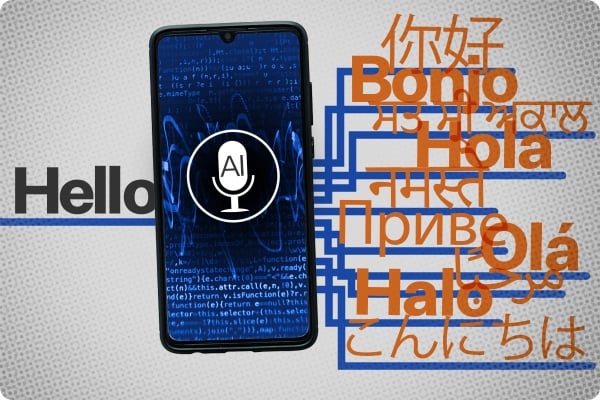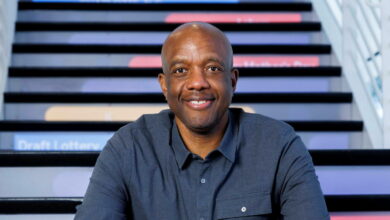AI adds hope and concern to foreign language learning

Takako Aikawa and a Massachusetts Institute of Technology team spent three years building an AI tutor to help students with Japanese writing skills. They halted the project in 2020 during the pandemic, but their goal got an unexpected boost two years later when OpenAI launched ChatGPT.
“ChatGPT just did everything that we wanted to do,” said Aikawa, a senior lecturer in Japanese at MIT and project lead. “It was sad; we spent a lot of hours and many years of work on it, but it was also happy because it just did everything we wanted to do.”
Aikawa and many foreign language professors across the nation view the emergence—and constant reiterations—of generative artificial intelligence (AI) tools as possible launch pads for their subjects, boosting interest from students, improving skills earlier on and advancing the evolution of foreign language learning.
The hope comes despite recent cuts in the field, notably from West Virginia University, which last summer cut foreign language majors and most courses. This May, the Department of Defense also cut funding to more than a third of its 31 language programs.
Jen William, Purdue University’s head of the school of languages and cultures, was initially skeptical when ChatGPT burst onto the scene in Nov. 2022.
“I was wary for sure; of course, with language courses we’re always concerned about enrollment,” she said. “My fear was that upper administrators especially would take this moment to capitalize on the fact that now we have an excuse to cut more language courses because all the students now have this tool at their disposal.”
But many foreign language professors see AI as an opportunity amid a difficult time.
“The path foreign language is on is a path toward extinction,” said Andrew Piper, professor of languages, literatures and cultures at Canada’s McGill University. “I tend to be cautious about using overblown language, but it is a disaster. My take is: It’s a broken system and by itself it needs reworking. I would love for [AI] to be a wakeup call. Whether it transpires that way remains to be seen.”
What AI Can Do
AI tools, especially ChatGPT’s newest version called GPT4-o, can help students not just with writing, but with speaking—making them on-demand tutors.
“The one-on-one is a huge advantage, because the biggest hurdle is classroom participation,” Piper said. “You do a lot of group work and it’s all about production. So we do what we can to amp up participating but we know there’s a ton of compromise happening.”
Institutions have begun tinkering with possibilities.
Arizona State University is creating “language buddies” within its OpenAI partnership, allowing university students to practice conversations with an AI bot at their own level.
Students in Purdue’s introductory level Spanish courses use an AI platform of their choice as a tool when writing essays. Purdue also hired computational linguists to further study AI and language.
“It’s not just pulling out a calculator in a math class, but it’s something that has to be intentionally coordinated and a guided tool,” William said. “Those professors can do it because they’re trained in AI but it will take some time to develop the skills. But I’m seeing more and more of the potential.”
Kevin Gaugler, assistant dean of liberal arts at Marist College and a Spanish teacher, said he believes the technology will bring a recalibration to language studies, rather than a demise—much like the rest of higher education that is re-thinking assessments and processes in light of AI.
“This isn’t unique to languages; because this is a technology that goes after human knowledge, every discipline will have to re-evaluate and recalibrate our curriculum to teach the competencies that’ll be more valued moving forward,” Gaugler said.
“That puts a burden on educators to shift our curriculum to be sensitive to that,” he said. “You can’t have introductory courses that rely on transactional things like reading menus or hailing cabs, because people can read their phones and do that.”
However, even with AI’s usage soaring among students, that recalibration will take time, training and evolving methods.
“It’s still going to be homework; it won’t suddenly make people say, ‘I just can’t stop talking to my French tutor,” Piper said. “It’s still a tutor at the end of the day, even if it’s a robot.”
New Iteration of Language Courses
Experts emphasize that teaching language courses is about more than grammar and vocabulary. Instead, there is a focus on cultural competencies, cultural empathy and communication.
“We’ve spent decades getting away from the idea foreign language courses are making people fluent,” William said. “It’s not about making sure to conjugate a verb [students] can look up any time. It’s more about seeing another culture through another lens.”
Some of those skills come into play later, in higher level courses, such as Piper’s German Language, Media and Culture course at McGill. While many students who enter universities take introductory foreign language courses, most of them go no further.
Piper said AI’s capabilities could help with basic material, such as vocabulary, and help students get to more advanced courses faster.
“It could introduce them [to the language] earlier, so they’re fluent, then can take higher-level courses,” he said. “It’s hard to teach German literature if your German is subpar.”
Paula Krebs, executive director at the Modern Language Association, agreed, pointing toward AI’s capabilities in coding languages that could help give computer scientists a leg up.
“We know how flexible we’ve had to be in the past and will continue to be,” she said. “When calculators came out math professors were not quitting their jobs. Computer science courses won’t go away with AI even though they can code; students will just start from the next step up.”
(Human) Teachers Still Needed
There are downsides with the technology—ChatGPT and many other generative AI tools largely train on English text, a factor that brings its own biases. Lesser known languages have a smaller digital footprint, according to Gaugler. For example, across the 137 Hawaiian islands, there are at least 130 languages, many of which have never been put in a written form.
There are some efforts being taken—Meta, the parent company of Facebook and Instagram—has a “No Language Left Behind” promise to ensure inclusion within AI translations.
There are also a number of language nuances, idioms and cultural contexts that humans, not machines, have to teach.
“AI can only take you so far,” Gaugler said. “I don’t think it can help you propose to someone, or seal the deal on the business transaction without understanding the culture and other language nuances.”
He said that even if we reach the “Star Trek moment” with a universal translator, there’s going to be “value in not speaking through a machine.”
Generative AI also does not take into consideration the training teachers undergo to help students learn difficult content. Krebs said AI does not add the literal human element needed.
“I just can’t see that AI itself could be valuable for language learning without the kind of human interaction and cultural context that makes language, language,” she said.
The Murky Future
Krebs said the MLA is conducting its next round of research into investigating foreign language course enrollment. A recent report based on 2021 data found that foreign language enrollment courses saw the steepest decline on record, falling more than 16 percent over five years.
But it’s not just student disinterest, Krebs said, noting the impact of higher education enrollment dropping overall and the large institutional cuts at places like WVU and the Department of Defense. She also said many institutions do not include foreign language in their data since most students do not take it as a sole major.
Piper believes the cuts are due to high costs, in that foreign language courses have to be kept small (20 to 30 students, in his university’s case) while other courses, such as Intro to Chemistry, can have 100-plus-person lectures.
The MLA is now working on an ad hoc committee to fine tune regulations and best practices when it comes to deploying AI. The organization spent the last few years focusing on computational English courses, but after the first year, realized foreign language needed a standalone focus.
“We realize we’ve got to put together a more integrated approach to this,” Krebs said. “Because every time I turn around someone is saying to me, ‘What’s going to happen to foreign language education with AI?’ I’m tired of having to say, ‘Sentence for sentence [AI translation] does not do the job of language education.’ It is not the same thing.”



